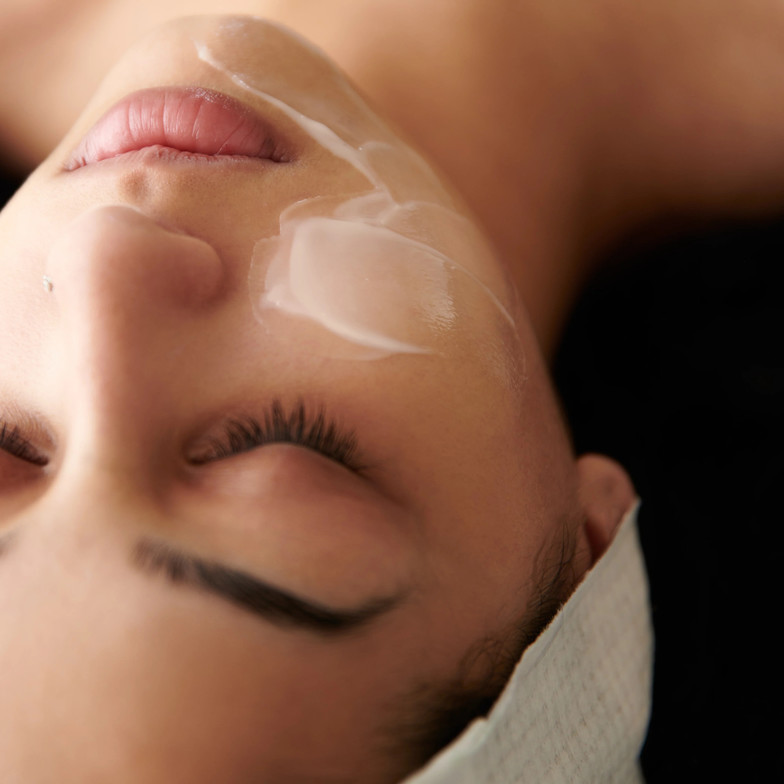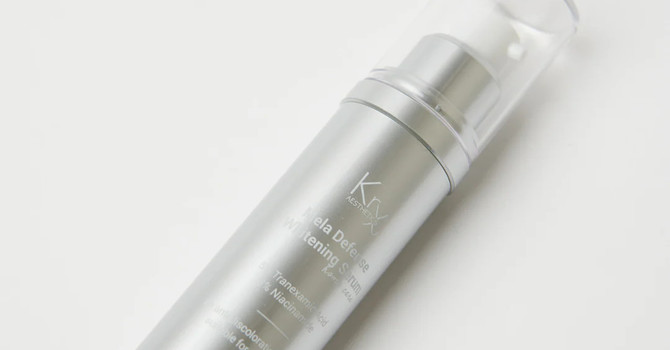
When people talk about “anti-aging,” most are really talking about collagen — the invisible network that keeps skin smooth, lifted, and resilient. It’s what gives youthful skin its bounce, what heals a scrape without a scar, and what fades as time (and life) move forward.
But collagen isn’t magic. It’s biology. And understanding how it works is the key to supporting it naturally — whether you’re 25 and focused on prevention or 55 and ready to rebuild.
What Collagen Really Is
Collagen is a structural protein — think of it as the scaffolding of your skin. Under a microscope, it looks like an intricate rope of fibers woven throughout the dermis, the middle layer of the skin. These fibers provide tensile strength and elasticity — the qualities that make young skin look firm and luminous.
Your body makes collagen every single day through a process called collagen synthesis. Specialized cells known as fibroblasts combine amino acids (mostly glycine, proline, and hydroxyproline) with vitamin C to form collagen strands. These strands act like tiny support beams, keeping the outer layer of skin taut and hydrated.
So when people say, “My skin just doesn’t bounce back like it used to,” that’s not just a figure of speech. That’s physiology.
When and Why Collagen Declines
Around our mid-twenties, collagen production begins to slow — about 1 percent less each year. It’s a quiet change at first, but after 30, those microscopic fibers start to thin, flatten, and lose organization.
Add in environmental and lifestyle factors — UV radiation, smoking, chronic stress, high sugar intake — and the decline accelerates. UV rays, in particular, trigger enzymes called matrix metalloproteinases (MMPs) that break down existing collagen faster than it can be replaced.
This imbalance leads to visible signs we often label as “aging”:
-
Fine lines and wrinkles
-
Loss of firmness or sagging
-
Thinner, more fragile skin
-
Slower wound healing
-
Dull, uneven tone
But collagen loss isn’t just about vanity — it’s a sign of reduced structural integrity. The good news? The skin can be trained to rebuild itself with the right stimulation.
The Science of Stimulating Collagen
Unlike topical moisturizers that only treat the surface, collagen induction happens within the dermis. The goal isn’t to add collagen from the outside (those large molecules can’t penetrate) — it’s to wake up the fibroblasts so they start producing more.
Here are the top, evidence-based ways we do that:
Microneedling (Collagen Induction Therapy)
Microneedling creates controlled micro-injuries that trigger the body’s healing cascade. This gentle trauma prompts fibroblasts to lay down new collagen and elastin, thickening the dermis and smoothing texture. It’s one of the most natural, proven ways to rebuild firmness without heat or chemicals.
Chemical Peels
Medium-depth peels (like glycolic or TCA) remove damaged outer layers while stimulating repair deeper down. Studies show that chemical exfoliation increases type I collagen — the main kind responsible for strength and elasticity.
Retinoids and Vitamin C
These topical ingredients are collagen’s favorite companions. Retinoids increase cellular turnover and directly signal fibroblasts to synthesize more collagen. Vitamin C, on the other hand, is an essential co-factor in the collagen-building process — without it, new fibers can’t form properly.
Professional Collagen Therapies
In-office treatments like radiofrequency, platelet-rich plasma (PRP), and biostimulatory fillers (such as Sculptra®) all work by igniting collagen remodeling over weeks to months.
Myth-Busting: Can You “Add” Collagen Through Creams or Drinks?
This question comes up constantly: Do collagen creams or powders actually work?
The short answer: not in the way most people think.
Topical collagen molecules are far too large to penetrate the skin. They can hydrate temporarily, but they don’t rebuild structure.
Collagen powders or supplements can help indirectly — by providing the amino acid building blocks your body needs to make collagen. Studies suggest hydrolyzed collagen peptides may improve skin hydration and elasticity after 8–12 weeks, but only when paired with a diet rich in vitamin C, zinc, and copper (all co-factors in collagen synthesis).
So while sipping collagen coffee won’t erase wrinkles, supporting your body’s internal environment absolutely helps.
Lifestyle Habits That Protect Collagen
Think of your collagen like a savings account — production slows with age, but withdrawals speed up under stress. Protecting what you already have is as important as building new.
Sunscreen — UV exposure is collagen’s biggest enemy. Daily SPF 30+ prevents photo-damage and premature aging better than any serum.
Nutrition — Protein (amino acids), vitamin C (citrus, bell peppers), and antioxidants (berries, leafy greens) form the raw materials for collagen synthesis.
Quit smoking — Nicotine and carbon monoxide reduce oxygen delivery to the skin, stunting fibroblast activity.
Hydration — Water supports enzymatic reactions that build collagen fibers and maintain turgor (firmness).
Stress management — Cortisol impairs tissue repair. Rest, meditation, and proper sleep keep collagen metabolism balanced.
Avoid over-exfoliation — Too many acids or scrubs can break down the barrier, triggering inflammation that degrades collagen.
Each of these habits might sound simple, but together they form the foundation of collagen preservation.
Collagen, Confidence, and Realistic Results
It’s easy to chase instant results — but collagen doesn’t operate on overnight timelines. It takes about 90 days for fibroblasts to produce and organize new collagen after stimulation. That means consistency beats intensity.
When clients at Garden of Bloom Med Spa begin collagen-supportive treatments, I often tell them: “You won’t wake up different tomorrow — but in three months, you’ll notice your reflection feels familiar again.” Skin that once felt thin or tired begins to regain density and strength.
That’s the beauty of collagen therapy — it restores not just how the skin looks, but how it behaves. It becomes more resilient, less reactive, more luminous.
And that kind of transformation lasts longer than any quick fix.
Looking Forward: The Future of Collagen Health
Modern research is uncovering fascinating possibilities — from peptide-based creams that mimic collagen fragments to stem-cell-derived growth factors that enhance fibroblast activity. While these innovations are promising, one thing remains clear: collagen thrives on consistency and care.
As providers, our goal isn’t to chase trends but to respect the biology of the skin — guiding it gently to do what it was designed for all along: renew, repair, and reveal vitality.
Final Thoughts: Rebuilding More Than Skin
Collagen loss is inevitable, but decline doesn’t have to mean defeat. Every facial, peel, microneedling session, or serum isn’t just cosmetic — it’s a reminder to invest in the structure beneath the surface.
Healthy collagen gives the skin more than firmness; it gives it memory. It holds the story of healing, of self-care, of showing up for yourself again and again.
At Garden of Bloom Med Spa, we treat collagen not as a beauty buzzword, but as a biological truth — one we can nurture with science, patience, and intention. Because the most beautiful skin isn’t the youngest — it’s the kind that keeps growing stronger with time.
To learn more about collagen-stimulating treatments — from microneedling to peptide-infused therapies — visit Garden of Bloom Med Spa in Davenport, Iowa, or book a consultation to discover a customized plan for restoring your skin’s natural structure and radiance.
Learn More at GOBMedSpa.com
Shea Springfield
Contact Me


